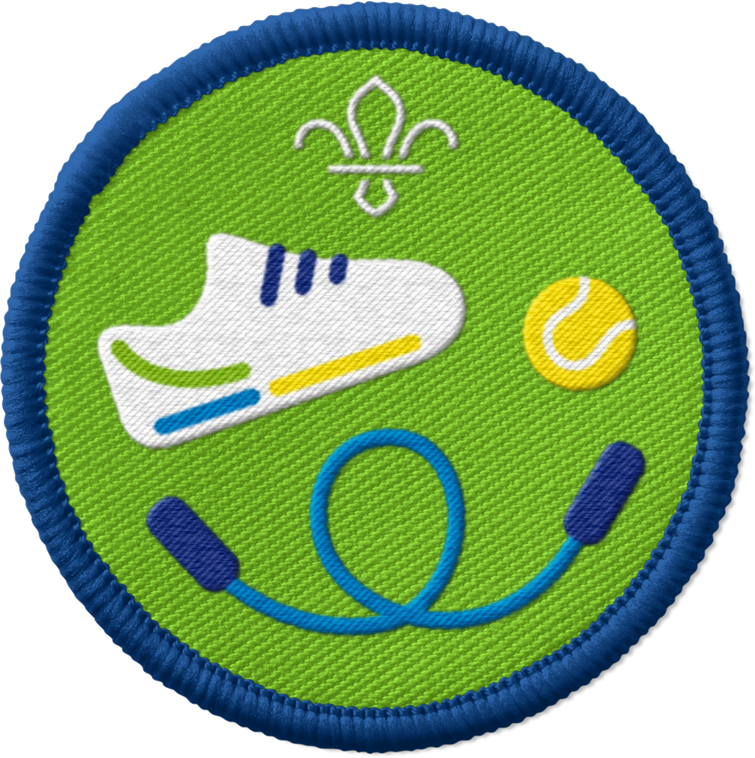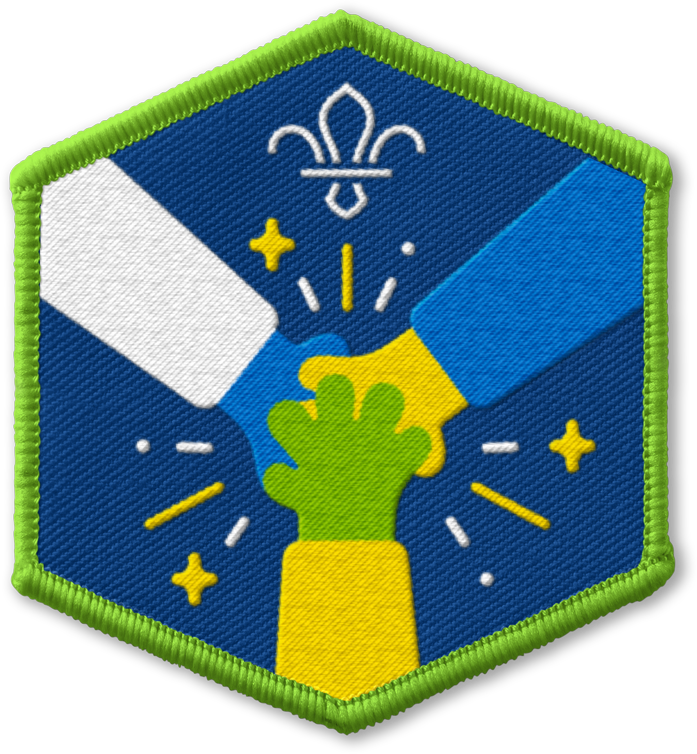
Hide and seek
Before you begin
- Use the safety checklist to help you plan and risk assess your activity. Additional help to carry out your risk assessment.
- Make sure all young people and adults involved in the activity know how to take part safely.
- Make sure you’ll have enough adult helpers. You may need some parents and carers to help if you’re short on helpers.
Setting up this activity
- Take a look at our guidance on playing active games.
- Find an area with plenty of safe hiding spaces, without people leaving the agreed boundaries.
- Set boundaries for during the game, which you could mark out with cones or natural features, such as walls and hedges.
- Remember to check the terrain and make sure the game area is free of hazards. For example, hazards could be dips in the grass, steps, rocks or rivers if you’re playing outside.
- Find a way to identify the seeker, such as by wearing a necker.
Introducing the game
- Explain the boundaries of the playing area and where the no-go zones are. You should set rules for where players can hide and where they can’t, making sure that the spaces are accessible for everyone to use and look in.
- Tell everyone where adults will be around the site and what people should do if anyone needs help. This should include setting memorable spot where an adult will always stay.
- Explain the signal to stop play and how long the game will go on for. A long blast on a whistle works well as a signal to stop the game.
- If playing in a public space, young people should be paired up so no young person is left alone. They should hide or move around together.
Play the game
- Gather everyone together and choose someone to be the seeker. The rest of the players are the hiders.
- The seeker counts up to 100, or another number, while the other players hide.
- When they’ve reached 100, the seeker then shouts, ‘Ready or not, here I come!’ and starts to search for the hiders.
- Everyone should stay hidden while the seeker tries to find everyone. Once you’ve been found, you’re out!
- When you’re out, wait at the place the seeker counted, or follow the seeker around and watch as they try to find the other player
- Once the seeker finds all the hiders, the round is over.
- The first person who was found is the seeker in the next round.
Variations of the game
This variation adds an extra challenge to Hide and Go Seek. At the start of the game, have a ‘home base’, which is where the seeker counts.
Once they’ve counted and started searching, the hiders must try to win by coming out of hiding and getting to home base without being tagged by the seeker. This variation of the game can is also known as 40:40.
In this version, once hiders have been found, they can help the seeker by also searching for the remaining players. This can make the game a little faster and keep everyone involved.
You can also have more than one seeker when you start the game too.
In this version, the players are in two teams. Each team has a toy, such as a teddy bear, that they work together to hide from the other team. Once both teams are ready, they race to see who can find the other team’s toy first.
Before you start playing, build a city of dens. You could use blankets and playhouses or tarpaulin, leaves and branches. Once your dens are all built, play a game of hide and seek within the dens.
In this version, only one person hides. Everyone else then counts, before having to try to find them.
You could have some kind of timer for this game, then time how long it takes everyone to find them. People should keep taking in turns to see who is able to hide for the longest.
In Hide and Seek, you usually can’t change hiding places and just stay in one place. However, in this game, you can try to move about, but without getting card.
You might start behind a tree, then sneak over and hide behind a bench when the ‘seeker’ isn’t looking. However, if you’re moving and the seeker catches you, you’ll still be out.
In this version, you’ll need at least one water pistol and you should set up a water refilling station.
There is one seeker, and everyone else hides.
The seeker is trying to find people and tries to spray them with water. If someone gets soaked, they’re out. You could also have those hiding be able to use a water pistols back at the ‘seeker’.
This is a slightly trickier game. To set up the game, create some kind of ‘code’ before you start playing and make sure no-one knows what it is.
A good way to do this is to write out a word, laminate it, then cut the word out into its letters. For example, the word ‘gold’ could be split into four letters ‘g’, ‘o’, ‘l’, and ‘d.’
Before everyone arrives, or while they’re distracted, hide the code letters.
In this game, everyone is a seeker. They could also work in teams or pairs. The seekers go off and find the ‘code’.
When they find it, they try to put it together. The first person to guess the code is the winner.
You could potentially have code that is one of the following:
- Numerals from a long number
- Words that make a sentence
- Letters from a name
- Letters from a secret word
Reflection
Wide games help people to practise their teamwork and problem-solving skills. This game needed everyone to work as a team, such as by people helping each other to find hiding spots.
Did you work as a team? How did you communicate with other players?
If you were ‘it’, how did you plan to find people – did you have a strategy? Was it hard to keep track of people or know where to look? Were there any easier places you thought people might be?
This game was also about problem-solving. What was the trickiest part of the game? People might think about having to choose a good hiding spot. Did people have to think ahead when they were deciding what to do?
You may have been creative and try to trick the seeker, such as by leaving your shoes somewhere. Is there anything you did?
If people were designing their own wide games, how could they help people develop their problem-solving and teamwork skills? What would you change about this game to make it better? How could we make it more creative? What would you do to make this game easier, harder, more challenging or more fun?
Safety
All activities must be safely managed. You must complete a thorough risk assessment and take appropriate steps to reduce risk. Use the safety checklist to help you plan and risk assess your activity. Always get approval for the activity, and have suitable supervision and an InTouch process.
- Active games
The game area should be free of hazards. Explain the rules of the game clearly and have a clear way to communicate that the game must stop when needed. Take a look at our guidance on running active games safely.
- Contact games and activities
Make sure everyone understands what contact is acceptable, and monitor contact throughout the activity.
- Outdoor activities
You must have permission to use the location. Always check the weather forecast, and inform parents and carers of any change in venue.
- Visits away from your meeting place
Complete a thorough risk assessment and include hazards, such as roads, woodland, plants, animals, and bodies of water (for example, rivers, ponds, lakes, and seas). You’ll probably need more adult helpers than usual. Your risk assessment should include how many adults you need. The young people to adult ratios are a minimum requirement. When you do your risk assessment, you might decide that you need more adults than the ratio specifies. Think about extra equipment that you may need to take with you, such as high visibility clothing, a first aid kit, water, and waterproofs. Throughout the activity, watch out for changes in the weather and do regular headcounts.
- Heavy and awkward objects
Never lift or move heavy or awkward items alone. Ask for help or, if possible, break them down into smaller parts.
- Road safety
Manage groups carefully when near or on roads. Consider adult supervision and additional equipment (such as lights and high visibility clothing) in your risk assessment.
- To make this game easier, play it in a smaller space or have multiple seekers.
- To make this game harder, play it across a larger space, have more people hide, or make it timed.
- People could run, move or play in pairs during the game.
- If it may take some people longer to hide, the person playing ‘it’ could count to a higher number, such as 60.
All Scout activities should be inclusive and accessible.
Ask young people what changes or adaptations they’d make to this game, then give their new rules or ideas a try.






